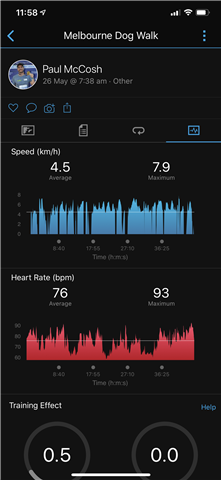Hi all,
I'm sure this has been posted a few times, but nonetheless here is my rant..
The past couple of weeks I've been going on a standard 3km walk around the block, using 4 types of workouts on the Garmin Fenix 6x Sapphire, Walk, Run, Cardio & Other.
I would have expected a smilier HR reading across all workout types, quite simply I would expect: what's your current HR? read-in this value into the workout.. but apparently not.
What I can see, is the the Running and Walking workouts on the watch reflect a pretty good indication on where my HR is actually at. With Cardio, my HR is spiking at 206 while walking.. and with "Other" the HR pretty much reflects a resting HR, I even throw in a few pushups to get this up a little but to no avail.
I love using 3rd party apps (Cross-Training) that utilise "Cardio" & "Other", but they are so off with respects to HR it is ruining my experience with the Fenix watch, I'd prefer not use it for CrossFit or HIIT workouts as it just doesn't accurately reflect my efforts in the workouts. It also makes it hard when I', trying to train within a certain HR zone for Recovery or Anaerobic
Ultimately my question is this, why is there such a significant variation in HR readings between workout types?






